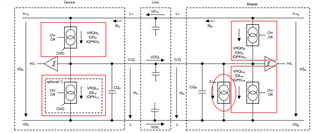Other Parts Discussed in Thread: TIOL111, TIOL112
Tool/software:
Hi team,
My customer is looking into the reference design TIDA-010016.
They have one support need from your team, pls see below picture:
- What's the function of the red blocks in below picture?
- How to turn the status from on and off?
- When turn on, how could device work to have the signal (VRQLM, IQLM, IQPKLM) and how could it work?
- Could you give the detailed explanation on this?
If it is related to IO-Link device, you can loop IO-Link AE into this case. Thanks.

Joyce

